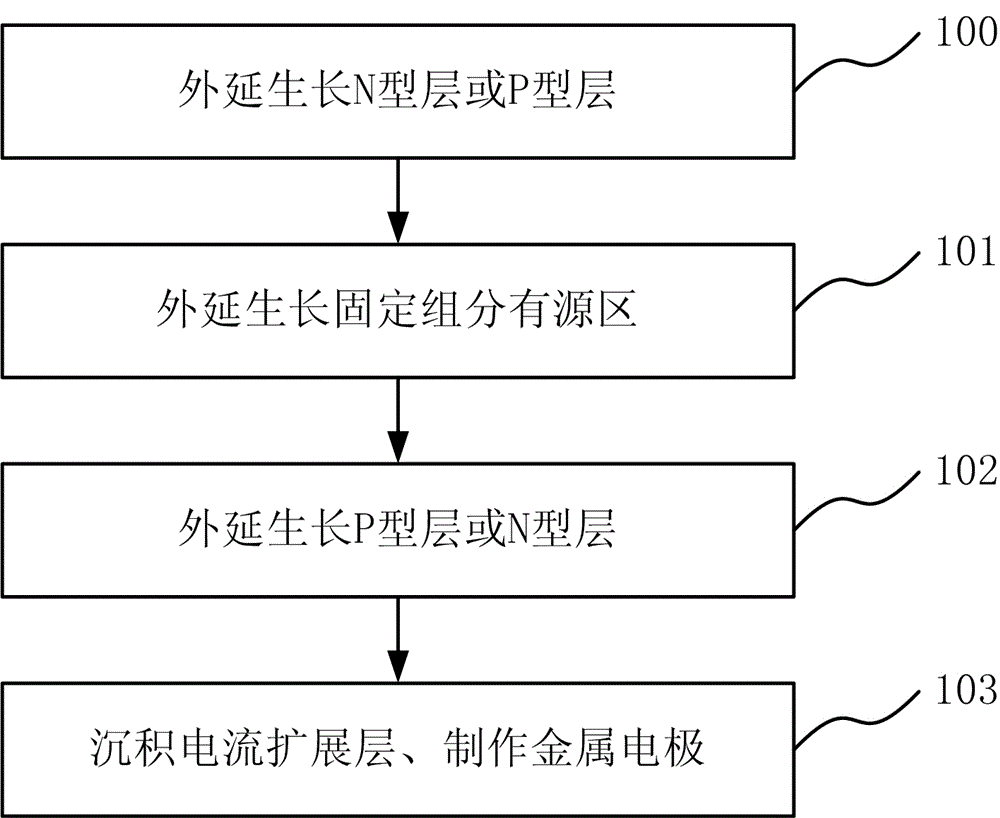Heterojunction solar cell and preparation method thereof
A solar cell and heterojunction technology, applied in the field of solar cells, can solve the problems of lowering the crystalline quality of materials, unfavorable carrier transport, lowering the efficiency of solar cells, etc., so as to improve photoelectric performance and efficiency, and reduce carrier recombination. Loss, the effect of lowering the barrier height
- Summary
- Abstract
- Description
- Claims
- Application Information
AI Technical Summary
Problems solved by technology
Method used
Image
Examples
no. 1 Embodiment
[0027] This specific embodiment provides a heterojunction solar cell with a structure such as Figure 4E As shown, it includes a first film 403 with a first conductivity type, and a first graded buffer layer 408, an active region 402, a second graded buffer layer 409 and a layer with For the second thin film 401 of the second conductivity type, the first graded buffer layer 408 is heterogeneous to the first thin film 403 , and the second graded buffer layer 409 is heterogeneous to the second thin film 401 . The first graded buffer layer 408, the active region 402, and the second graded buffer layer 409 are sequentially grown between the first thin film 403 and the second thin film 401, respectively reducing the distance between the first thin film 403 and the active region 402 and the second The barrier height between the thin film 401 and the active region 402 improves the carrier transport efficiency compared with traditional solar cells.
[0028] The above-mentioned...
no. 2 Embodiment
[0039] image 3 Shown is the method flowchart of the second specific embodiment of the method for manufacturing a heterojunction solar cell.
[0040] Figures 4A to 4E Shown is a flow chart of the process steps of the second specific embodiment of the preparation of the heterojunction solar cell.
[0041] This specific embodiment provides a method for preparing a heterojunction solar cell as described in the first specific embodiment, including steps:
[0042] Step 300, growing a first graded buffer layer heterogeneous to the first film on the exposed surface of the first film;
[0043] Step 301, epitaxially growing an active region on the exposed surface of the first graded buffer layer;
[0044] Step 302, growing a second graded buffer layer on the exposed surface of the active region;
[0045] Step 303 , growing a second thin film layer heterogeneous to that of the second graded buffer layer on the exposed surface of the second graded buffer layer, and the conductivity ty...
PUM
 Login to View More
Login to View More Abstract
Description
Claims
Application Information
 Login to View More
Login to View More - R&D
- Intellectual Property
- Life Sciences
- Materials
- Tech Scout
- Unparalleled Data Quality
- Higher Quality Content
- 60% Fewer Hallucinations
Browse by: Latest US Patents, China's latest patents, Technical Efficacy Thesaurus, Application Domain, Technology Topic, Popular Technical Reports.
© 2025 PatSnap. All rights reserved.Legal|Privacy policy|Modern Slavery Act Transparency Statement|Sitemap|About US| Contact US: help@patsnap.com



